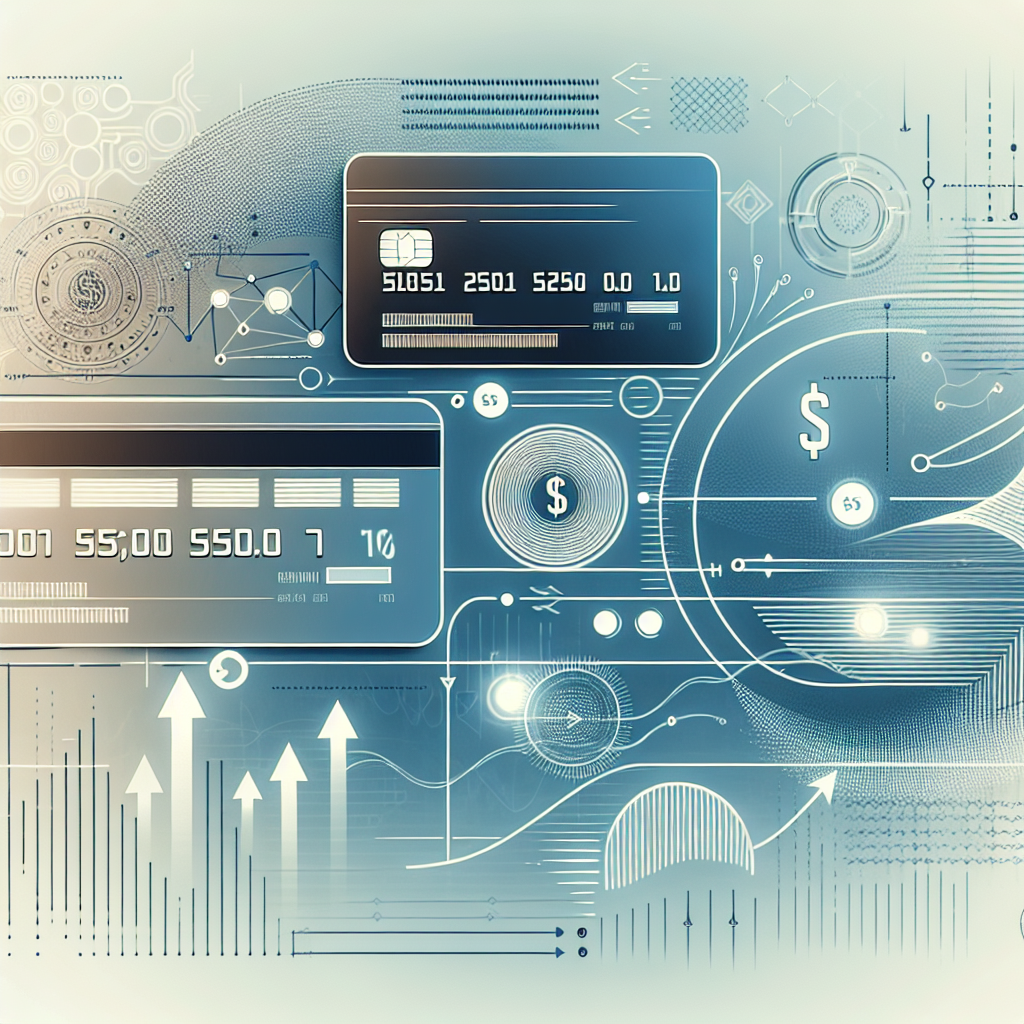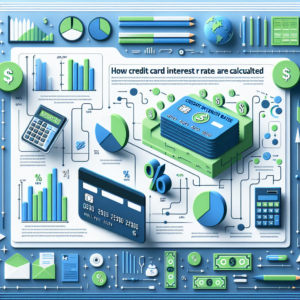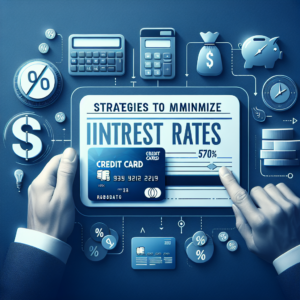
Credit cards are an essential part of personal finance for many people, offering convenience, rewards, and the flexibility to make purchases and spread out payments. However, with that flexibility comes the responsibility of managing your credit effectively. One of the most critical aspects of managing credit cards is understanding how interest rates work, as these rates can significantly impact your financial health.
If you’re carrying a balance, credit card interest rates, or Annual Percentage Rates (APRs), can cause your debt to accumulate rapidly. This article will break down how credit card interest rates are calculated, the different types of APRs, and practical strategies for minimizing interest charges on your credit card balance. By the end of this article, you will have a solid understanding of credit card interest rates and how to minimize their impact on your finances.
What is a Credit Card Interest Rate?
A credit card interest rate is the cost of borrowing money through your credit card. Expressed as an APR, this rate tells you how much interest you will be charged annually if you don’t pay your balance in full. In essence, it represents the price you pay for carrying a balance on your credit card.
Credit card APRs can vary widely depending on the card, your creditworthiness, and whether you’re making new purchases, cash advances, or transferring balances.
Types of Credit Card Interest Rates
Understanding the different types of interest rates can help you navigate credit card offers and avoid unnecessary charges. Here are the most common types of credit card interest rates:
-
Standard APR: This is the most common APR that applies to purchases made with your credit card. It’s the baseline interest rate that most transactions will accrue if you carry a balance.
-
Introductory APR: Many credit card issuers offer 0% APR for a limited period on purchases and balance transfers. This promotional rate typically lasts between 6 to 18 months. After the introductory period ends, the regular APR will apply.
-
Penalty APR: This higher interest rate can be triggered if you miss a payment, make a late payment, or exceed your credit limit. Penalty APRs can be as high as 29.99%, which can dramatically increase your debt if you don’t pay attention to your card’s terms.
-
Cash Advance APR: When you withdraw cash from your credit card, it usually comes with a higher APR than standard purchases. Additionally, interest begins accumulating immediately, with no grace period.
How Credit Card Interest Rates are Calculated
Credit card interest is calculated daily based on your Average Daily Balance (ADB). The APR, expressed as an annual rate, is divided by 365 to get the daily periodic rate (DPR), which is then multiplied by your average daily balance.
Here’s an example of how the interest is calculated:
Example:
Let’s say your credit card has an APR of 18%, and you have a $1,000 balance.
- Daily Periodic Rate (DPR) = 18% ÷ 365 = 0.04932% per day.
- Daily Interest Charge = $1,000 x 0.04932% = $0.49 per day.
In this scenario, if you carry a $1,000 balance for 30 days, you’ll pay around $14.70 in interest for that month. If you continue carrying the balance, the interest compounds, and the cost of the debt will grow each month.
The key takeaway here is that credit card interest can accumulate quickly if you only make the minimum payments. The longer you carry a balance, the more you will pay in interest.
Factors Affecting Credit Card Interest Rates
Several factors affect the interest rate your credit card issuer charges. Understanding these factors can help you identify areas where you can improve and ultimately lower your interest rate.
1. Credit Score
One of the most significant factors in determining your credit card APR is your credit score. Credit card issuers assess your creditworthiness through your credit score, which is a reflection of how reliable you’ve been at managing credit in the past.
- Excellent Credit (750+): You’ll likely qualify for the lowest APRs available.
- Good Credit (700-749): You may receive competitive APR offers but not the best.
- Fair Credit (650-699): Expect higher APRs as you pose more risk to issuers.
- Poor Credit (below 650): You may receive a much higher APR due to the higher perceived risk.
2. Issuer Policies
Different credit card issuers have their own policies regarding APRs. While some may offer low APRs for customers with excellent credit, others may have higher rates across the board. It’s important to shop around and compare credit card offers to find the best rate.
3. Type of Credit Card
The type of card you choose also impacts the APR. For example:
- Reward cards tend to have higher APRs in exchange for earning points, miles, or cashback on purchases.
- Balance transfer cards often offer an introductory 0% APR for balance transfers, but after the promotional period ends, the regular APR applies.
- Secured cards for people with poor or no credit may come with higher APRs due to the higher risk involved.
4. Economic Conditions
The overall state of the economy, and particularly the actions of the Federal Reserve, can influence the interest rates charged by credit card issuers. When the Fed raises or lowers interest rates, credit card APRs often follow suit.
Why Credit Card Interest Rates Matter
Credit card interest rates are more than just a minor detail—they can have a significant effect on your finances. If you don’t pay off your balance in full each month, interest begins to accrue. Over time, this can result in paying much more for purchases than the original cost.
How High Interest Rates Hurt Your Wallet
When you carry a balance on your credit card, the interest charges can snowball. Here’s why high interest rates matter:
-
Accumulating Debt: If you carry a balance, each month you’ll be charged interest. The more you carry, the more you owe, and this can create a snowball effect. Eventually, the interest charges can become larger than your initial purchases, making it harder to pay down your balance.
-
Compounding Interest: Credit card interest compounds daily, meaning that you pay interest on your interest. For example, if you didn’t pay off your $1,000 balance and accrued interest of $15 in one month, you would be charged interest on the new balance ($1,015) the following month, further increasing your debt.
-
Impact on Credit Score: Carrying a large balance and accruing interest can also negatively affect your credit utilization ratio, a key factor in your credit score. This could lead to a decrease in your credit score, making it even harder to get low-interest credit in the future.
Strategies to Minimize Credit Card Interest Rates
While you cannot control the APR set by your credit card issuer, there are several practical strategies you can use to minimize the amount of interest you pay on your credit card balances.
1. Pay Your Balance in Full Every Month
The best way to avoid paying interest is to pay off your balance in full every month. By doing so, you avoid interest charges altogether. This also helps maintain a healthy credit score by keeping your credit utilization ratio low.
2. Negotiate Your APR
If you have a good payment history and a solid credit score, you might be able to negotiate a lower APR with your credit card issuer. This is especially true if your credit score has improved or if you’ve been a loyal customer. Call your issuer and request a lower rate—they may be willing to accommodate you, especially if you mention offers from other issuers.
3. Transfer Balances to a Lower-APR Card
If you have high-interest credit card debt, transferring your balance to a card with a lower APR can save you money. Many cards offer 0% APR on balance transfers for an introductory period, typically 6 to 18 months. However, make sure to read the fine print—fees can apply to balance transfers, and if you don’t pay off the balance before the 0% period ends, you could be hit with a high APR.
4. Avoid Cash Advances
Cash advances usually come with a higher APR than purchases and start accruing interest immediately. To avoid unnecessary fees and interest, use a debit card or another method for accessing cash instead of taking out a cash advance on your credit card.
5. Use a Credit Card with 0% APR on Purchases
Some credit cards offer an introductory 0% APR for purchases for a set period (typically 6-18 months). If you need to make a large purchase, consider using one of these cards to avoid paying interest on your purchases during the introductory period. Just make sure you pay off the balance before the promotional rate expires.
6. Make Payments More Than Once a Month
Another way to minimize interest is to make more than one payment each month. This reduces the balance on which you are charged interest and can help lower the overall interest you pay. Even if you can only make small payments, doing so frequently will help.
Understanding credit card interest rates and how they’re calculated is essential for minimizing debt and saving money. By following the strategies outlined in this article—such as paying off your balance in full, negotiating lower rates, and using cards with 0% APR offers—you can reduce the impact of high interest rates and take control of your credit card spending.
Visit our other website: https://synergypublish.com


